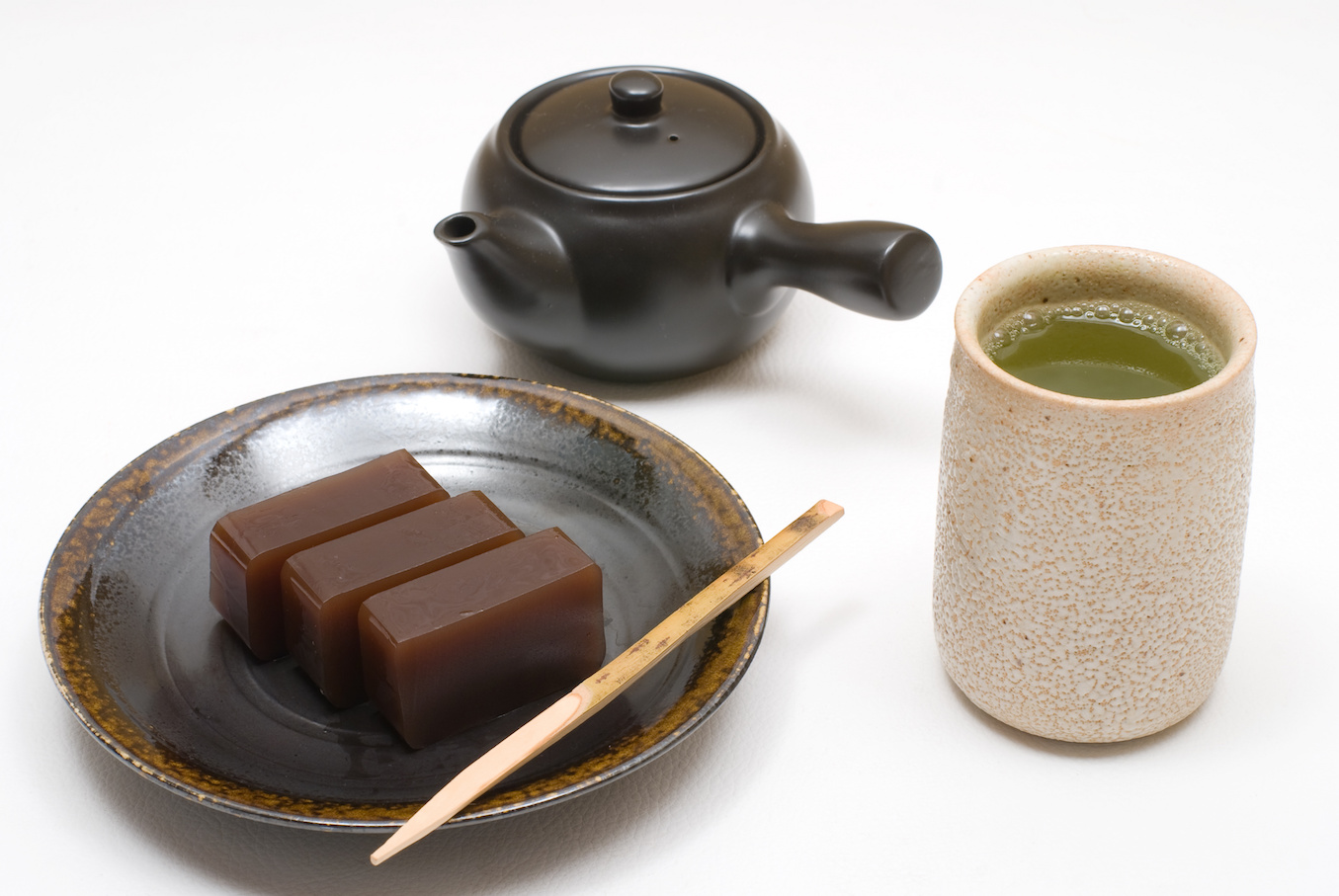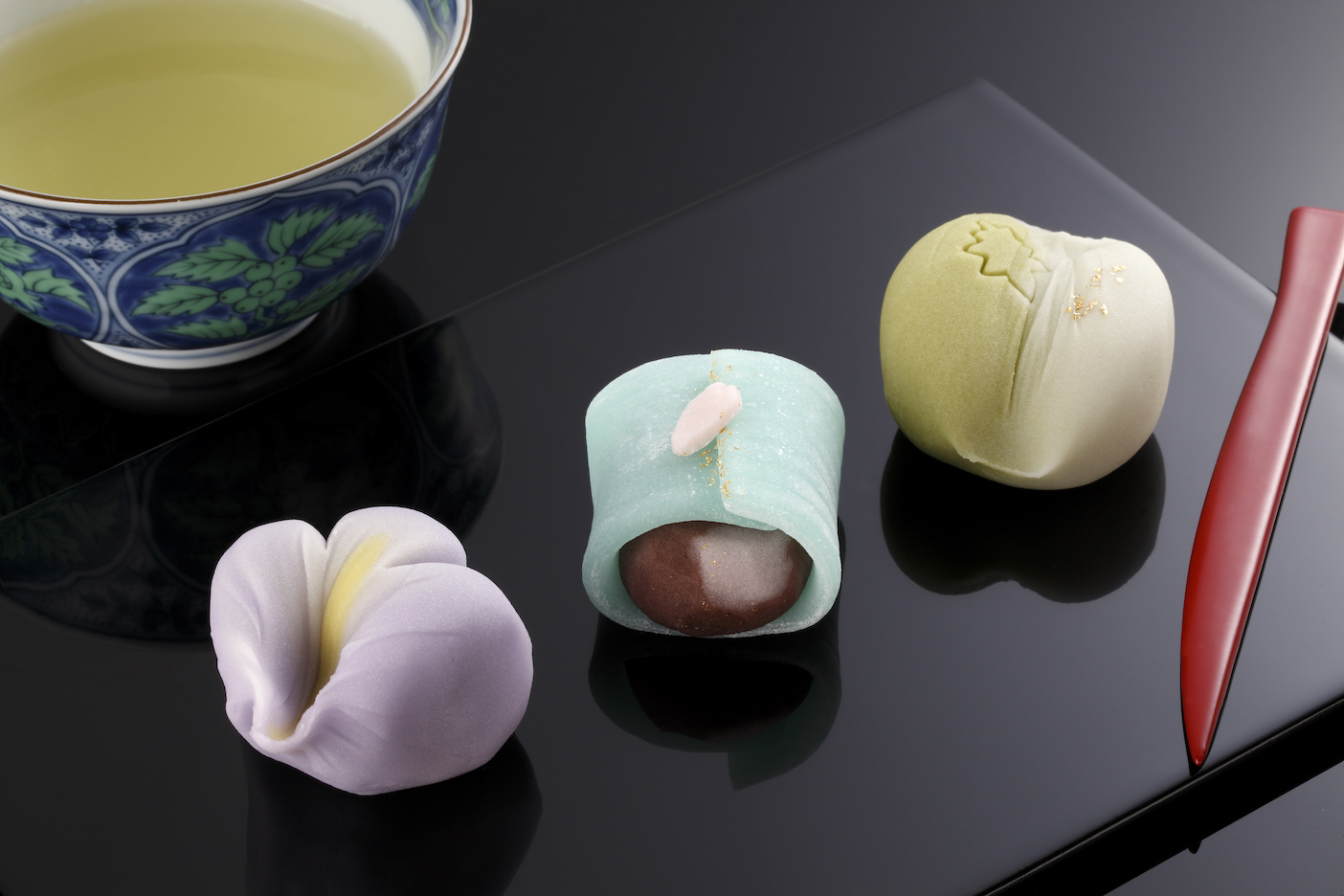お菓子とは、「菓」の漢字が示すように、元は果物のことを指しました。砂糖は当時の日本で生産できなかったため、大変な貴重品だったのです。室町時代のお茶席では、お菓子に椎茸や昆布を煮た物が使われ、また中国から羊羹や饅頭の作り方も伝わりました。そして江戸時代になると、砂糖が日本で生産されるようになり、細工菓子も発達し、現代に見るいろとりどりの和菓子が完成したのです。
The Japanese sweets made for tea ceremonies are sophisticated and beautiful. They are finely crafted and are normally given poetic names based on a season or classic Japanese literature.
However, the Japanese word for “sweets” originally meant fruit. Sugar is not native to Japan, and it was very expensive in Japan until it became possible to grow it at the end of the 18th century.
At tea parties held from the 12th to the 14th century, boiled mushrooms and seaweed were served as accompaniments. In the same period, a fish or meat jelled broth called yôkan and a savory bun called manjû were imported from China. They have now become sweets in Japan.


